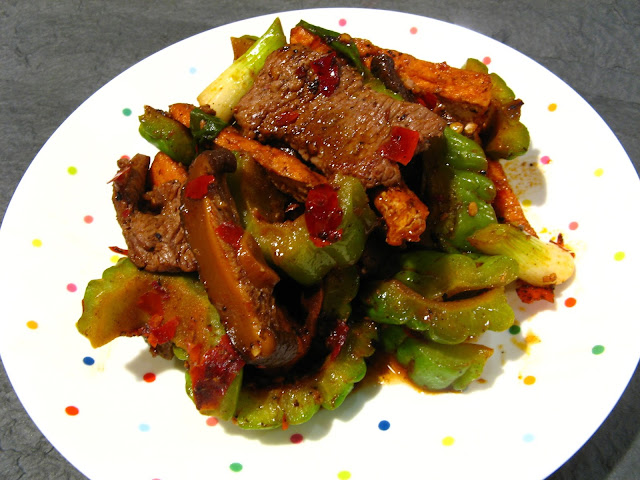My local Japanese market had thinly sliced Kurobuta pork
loin on sale and, as usual, bought it before knowing what dish I was going to
make. Kurobuta pork, or Berkshire pork, is a heritage pig, meaning that it’s
not the mass farmed pig that’s raised in the USA whose meat is widely available
in grocery stores. The only way I can describe the taste compared to regular is
that Kurobuta pork is more “porky” tasting. If Kurobuta pork is not available
at your local Asian market, then regular pork may be substituted. I added fish
balls to make the classic seafood and meat combination found in Chinese dishes,
and then decided to use Korean hot pepper paste and powder to give the dish an
added Asian twist.
Enjoy!






